

The user could switch from horizontal to vertical format by depressing a small chrome button on the left side of the housing. This allowed the body mount to rotate 90 degrees. This movement was, via a geared wheel, connected to the fine ground glass focusing screen. As you rotated the camera through the 90 degrees the screen also rotated to indicate the proper vertical frame! A nice touch and it works quite smoothly.
Serial numbers appear to begin at #471101 (which is pictured here!), and have been reported as high as #471769 (also in this article!). This would suggest that less than 800 were made. More may exist but probable production is under 1000! The prisms are also numbered, but were not mated to the housings in exact order. The 45 degree prisms are numbered from #67001 and have been recorded up to #67623. The 90 degree prisms begin at #77001 but have only been reported up to #77056!!
The Nikon Reflex Housing was never made in large numbers, and the 90 degree prism can be considered rare. They are also an impressive item and mechanically interesting, all of which makes them an exceedingly valuable accessory today, with reported sales at 20 times original list price!
This article is concerned with the second version of the Nikon Reflex Housing, which we call the Type Two. Its predecessor will be covered at some later date, as not enough information is available at this time to produce a definitive report on the much rarer Type One. However, even though this second type was made in larger numbers, it also is not what can be called a common item, and changes hands at very high prices. In addition, two of its accessories can be considered extremely hard to find, if not actually "rare".
The first price sheet which lists the new type reflex housing that I am aware of is dated May 1, 1956, while the last one showing the older type is from November 15, 1955. Therefore, we can assume that sometime in the early months of 1956 the new and improved second version was released at a price of $129.50 (dealer cost was $84.18!), including the 45' angle prism, 4.3X magnifying eyepiece, finger release and cable! The latest listing I have is dated April 1, 1964 where its price had risen to $138.50, still a bargain. The accessory prices were cable release ($7.95), finger tip release ($5.95) and 90' pentaprism ($42.00), about which more will be discussed later.
This newer housing differed significantly from its predecessor in design, if not in function. Its exterior finish was changed from a glossy black to a krackle surface, which extended to both types of interchangeable prisms. Nearly every corner and edge was rounded and contoured to produce an item that, though bulky by nature, was easy to grasp and hold, and seemed less intrusive. The standard prism (of the image erecting type), was newly angled at 45 degrees, a marked improvement over the original model's straight up design. Not only was this new prism more comfortable to use, but it also had a built in 4.3X magnifier and dioptor correction! It was mounted and removed via a very easy to use bayonet locking system.
A second interchangeable prism was announced as early as 1957, but doesn't seem to have been actually available to possibly as late as 1959. It was a 90 degree pentaprism that allowed the user to focus at eyelevel, as you would with a single lens reflex camera! With this prism mounted you could actually aim, focus and shoot in what is, for most photographers, a more natural position. It also had a focusing eyepiece and bayoneted on and off in the same manor. Its original price was only $42.00 but it did increase to $45.00 later on. Though bulkier and heavier than the standard 45 degree prism, it did offer the user a choice of viewing angles. It appears that every few users took advantage, as to this day collected serial numbers still suggest a production run of less than 100 pieces!
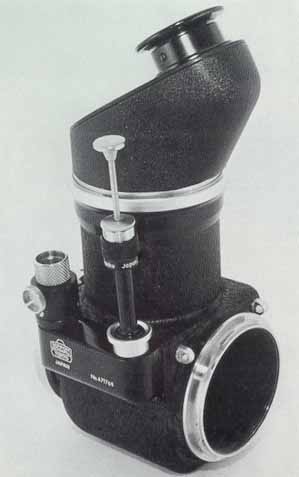
| 
|
|

| 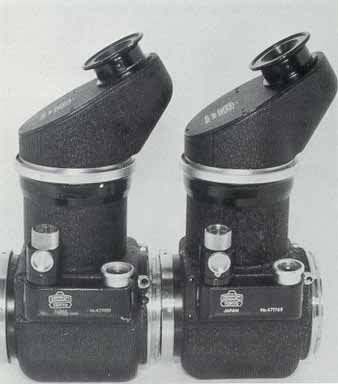
|
|
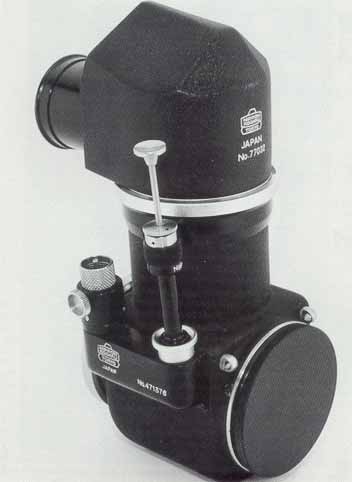
| 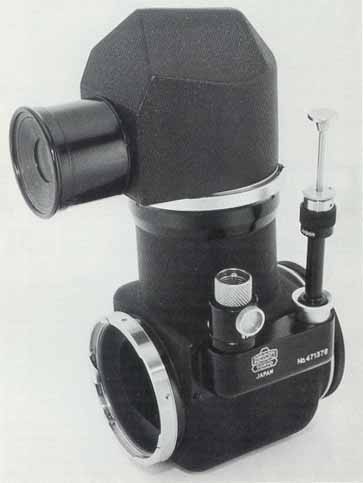
|
|
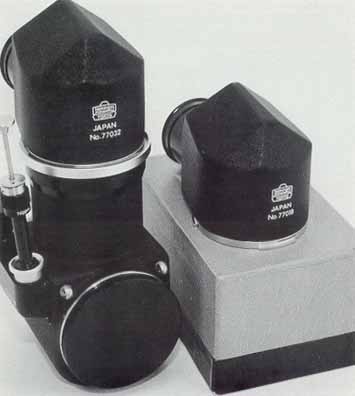
| 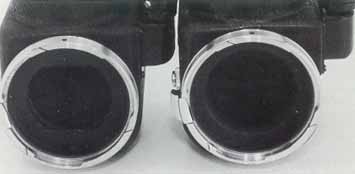
|
|
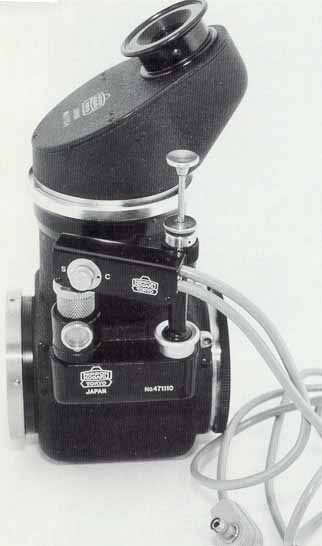
| 
|
|
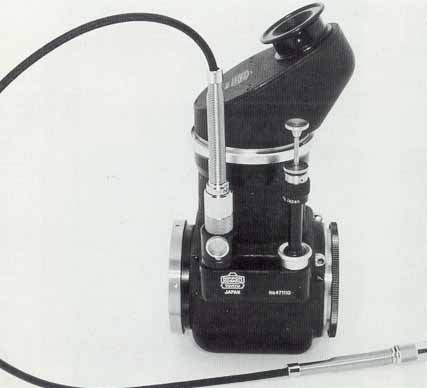
| 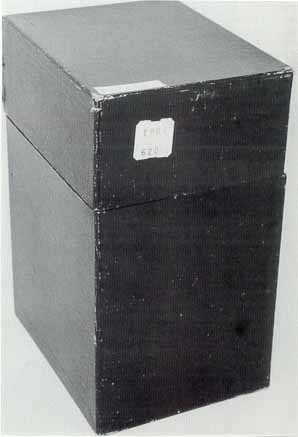
|
|
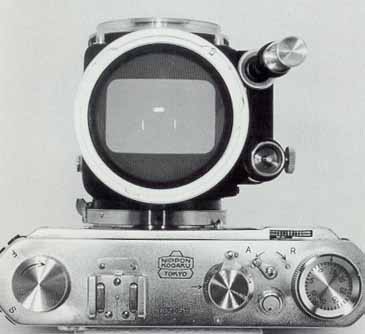
| 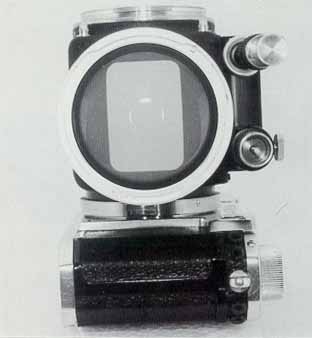
|
|
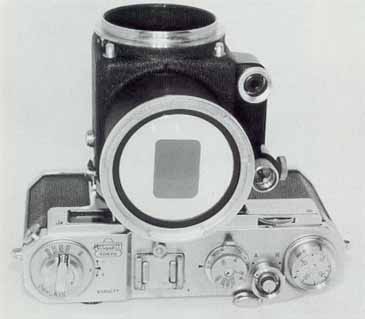
| 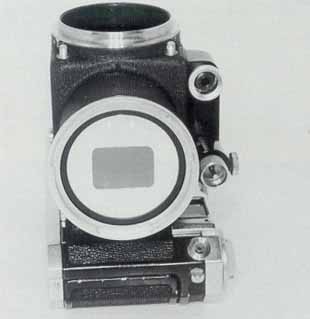
|
|
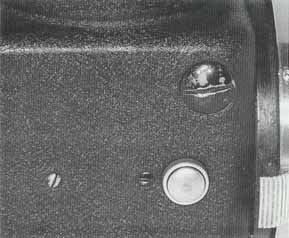
| 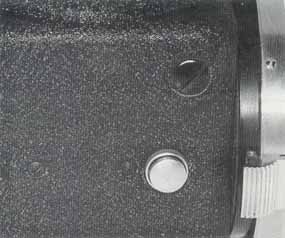
|
|
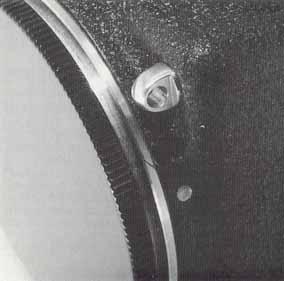
| 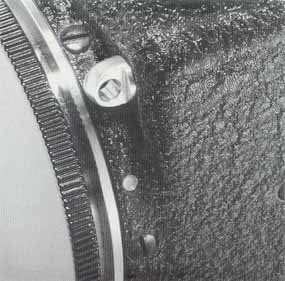
|
|
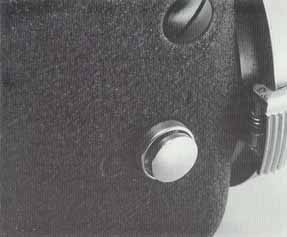
| 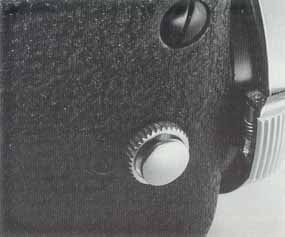
|
|